Research Study Brief
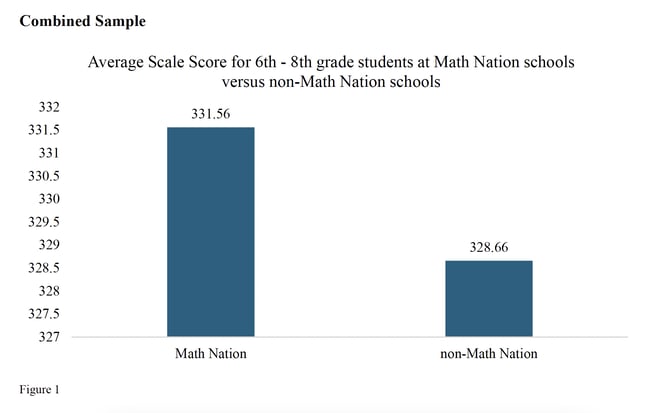
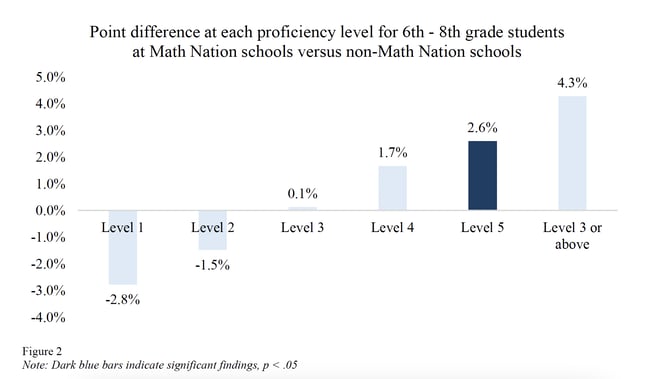
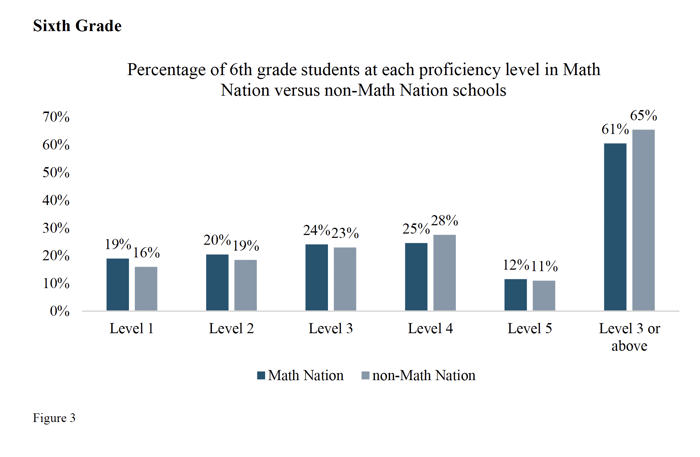
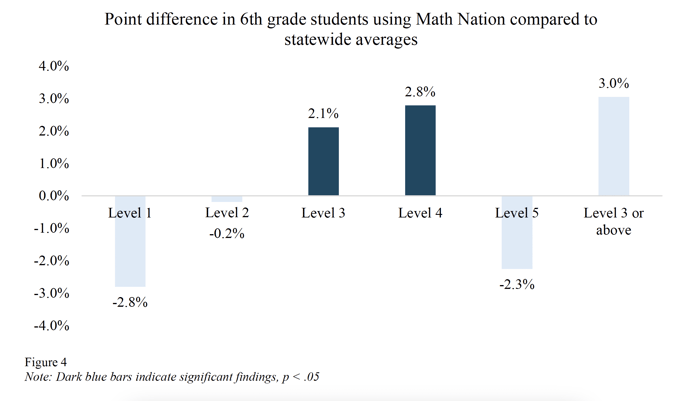
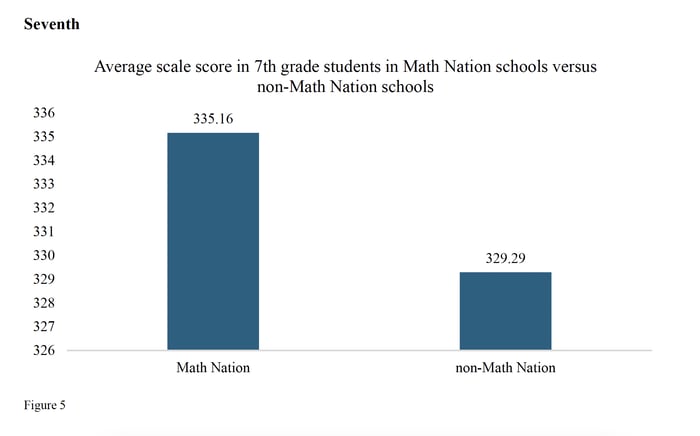

Comparison of matched Math Nation and non-Math Nation 7th grade performance
| Math Nation Mean (SD) | Non-Math Nation Mean (SD) | Mean Difference | β | p-value | Effect size | |
| Average Scale Score | 335.16 (12.40) | 329.29 (13.22) | 5.87 | 0.06 | 0.01 | 0.46 |
| Level 1 | 18.83% (14.05%) | 24.94% (16.21%) | -6.11% | -0.04 | 0.03 | 0.40 |
| Level 2 | 17.97% (7.77%) | 21.22% (9.34%) | -3.25% | -0.03 | 0.04 | 0.38 |
| Level 3 | 27.41% (8.05%) | 27.32% (9.84%) | 0.10% | -0.01 | 0.57 | 0.01 |
| Level 4 | 20.70% (9.32%) | 17.32% (13.32%) | 3.38% | 0.03 | 0.06 | 0.29 |
| Level 5 | 15.06% (14.58%) | 9.16% (11.63%) | 5.90% | 0.05 | 0.01 | 0.45 |
| Level 3 or above | 63.22% (20.22%) | 53.76% (24.14%) | 9.46% | 0.06 | 0.02 | 0.42 |
Table 1

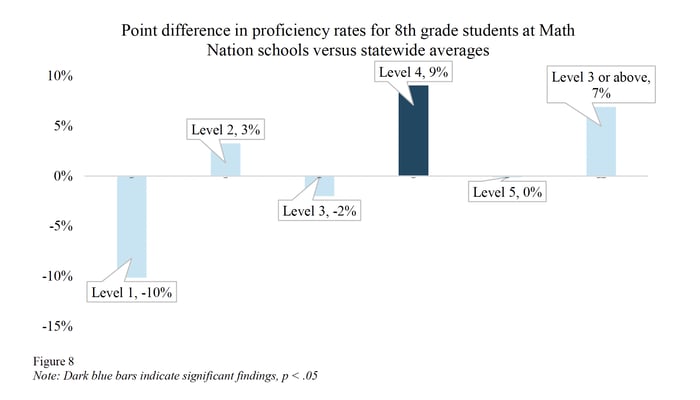
This report provides evidence that schools that used Math Nation in the 2022-2023 school year had higher math achievement in 6th-8th grade. Schools that used Math Nation had significantly higher scores and significantly higher percentages of students achieving Level 5 proficiency. Specifically, Math Nation schools scored 2.90 points higher and had 2.60% more students who achieved Level 5 proficiency. Differences were also seen between each grade level. In 6th grade, schools using Math Nation had 2.11% more students scoring at the Level 3 proficiency level, and 2.78% more students scoring at the Level 4 proficiency level compared to the statewide average. The effects of Math Nation were particularly robust for 7th grade students. Specifically, schools that used Math Nation in 7th grade had a significant 6-point increase in scores, had significantly fewer students at Levels 1 and 2, and nearly 6% more students achieving Level 5 proficiency. Moreover, almost 10% more 7th grade students achieved Level 3 or higher when using Math Nation compared to their non-Math Nation peers. Effect sizes were medium to large based on field standards. Lastly, 8th grade students using Math Nation had 4% more students achieving Level 4 proficiency when compared to the statewide average, representing a significant increase. Taken together, these findings provide consistent support for the effectiveness of Math Nation.

Designed to make measurable impacts on student achievement, Accelerate Learning Inc. offers you a customized STEM solution for all your students. Learn how you can preview or demo our products for free.
Explore More Research & Case Studies